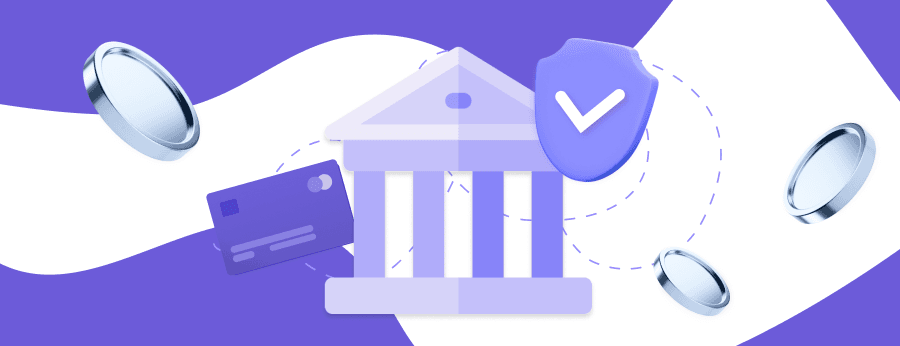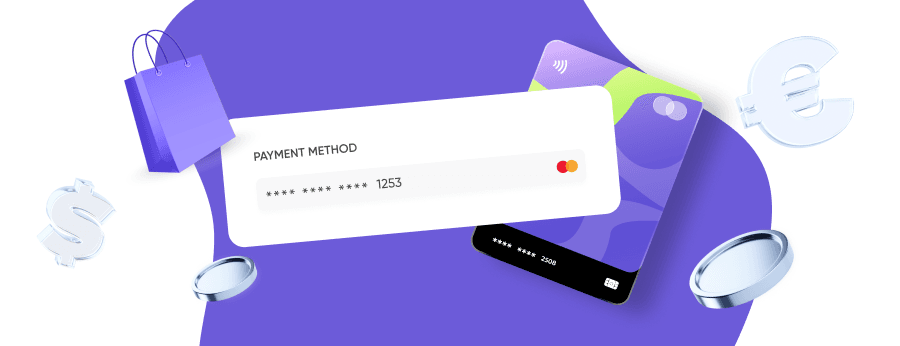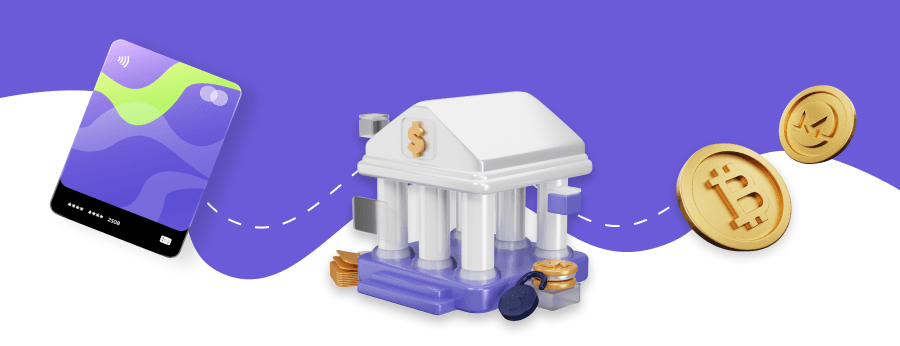Every merchant knows this pain. Customers expect payments to be quick and simple. Delays in processing payments can break trust and cause frustration. Handling cash feels not only slow but also unsafe. Without reliable merchant services, even strong businesses lose sales. A merchant payment gateway opens the way to easier progress. Now we cover its meaning, types, and process.
Merchant Payment Meaning
In simple terms, a payment is when a customer gives money to a merchant in exchange for goods or services. A merchant is a business or individual that accepts payments from customers, so a merchant payment refers to the act of a customer paying a merchant for a purchase.
Many transactions can happen in person or online. Today we have different payment methods: paying with cash, a credit card, a debit card, or another electronic payment method. Essentially, anytime you buy a product or service and settle the seller, you're completing a payment transaction that counts as a merchant payment.
Examples of a Merchant Payment
If you buy lunch at a favourite cafe, the merchant might accept cash or a credit card – either way, it's a merchant payment. Another example is purchasing a product on an e-commerce site: you select your items and enter your payment details on the checkout payment page.
Once you submit the order, the website processes your payment as a merchant transaction. Even remitting for a subscription service counts as a merchant payment. So, if your app automatically charges your debit card every month, that recurring charge is a merchant payment too.
Different Payment Methods
Merchants accept a variety of payment options to serve clients in diverse scenarios. So, customers can use a preferred payment method, whether they're remitting in person or online. Broadly, merchant payments range from traditional in-store transactions to digital payments like mobile or wallet-based payments. Below, we will explain the basic types of merchant payment:
Retail and In-Store Payments
This type happens face-to-face at physical shops or service locations. The customer might settle using cash or make a card payment by swiping a credit or debit card on a point-of-sale terminal. The merchant’s card reader or cash register is connected to the payment processor via the acquiring bank. The processor then requests authorization, allowing the customer to receive instant confirmation. This traditional method offers a swift, familiar payment experience for both the buyer and the merchant.
E-commerce Payments
These are transactions that take place online, often through sites or apps, without any face-to-face interaction. The client typically enters their payment information on a secure checkout payment page. They provide details or use a saved digital wallet. The website then uses a payment gateway in ecommerce to encrypt and transmit the data to the processor, which authorizes the transaction in real time.
Mobile Payments
A form of electronic payments using a smartphone or tablet to complete a transaction. For example, you can tap your phone at a store terminal with or scan a QR to accept payments via a mobile app.
The method is extremely convenient – instead of carrying cash or banking cards, customers use their phones to settle quickly, and many now expect this seamless, tech-friendly option from merchants. In recent years, the use of mobile wallets has increased dramatically. Digital wallet users are projected to exceed half of the global population by 2026.
Bank Transfers
Payment gateways work by moving money directly from the customer’s bank account to the merchant’s bank account. The buyer might use an online banking app or wire service to send the exact amount for the purchase of goods or services.
This method avoids credit and debit card networks completely. Instead of swiping a card, the customer enters the merchant’s bank payment details to initiate an electronic transfer. Bank transfers can take a bit longer to process than card payments. They often come with low fees and are useful for large payments or business-to-business transaction needs.
Digital Wallet Payments
Digital wallet payments involve using an online account or app, without directly entering your card details for each purchase. As one of the most common forms of an electronic wallet, this method lets customers check out with just a login or a quick confirmation on their phone, making transactions fast and secure.
Digital wallets are extremely popular – by 2025, digital wallets are expected to account for over half of global e-commerce payment value. For merchants, adding digital wallets among their multiple payment methods is wise, since shoppers appreciate this option.
Recurring and Subscription Payments
These are known as recurring payments – transactions that happen on a regular schedule automatically. Merchants use this for subscription services. Consider a streaming TV service charging your credit card every month, or a gym debiting your account annually.
The merchant can accept payments for each billing cycle without the customer needing to manually settle each time. This approach makes sure the merchant is paid on time. It also makes it easier for the customer, who doesn’t need to remember every payment.
Buy Now, Pay Later
A payment option that lets customers purchase an item immediately. They can then settle for it over time in multiple smaller installments. A shopper might settle 25% of the price at checkout and then settle the remaining balance in three monthly installments. Often without interest if payments are on time.
This transaction model gives shoppers more flexibility. Many merchants have started offering Buy Now Pay Later (BNPL) at checkout because it can increase sales – studies show that BNPL can raise conversion rates by around 20% for certain purchases. Overall, BNPL has quickly become a good way for merchants to accept payments from customers who prefer not to remit the full amount.
Check and Alternative Payments
Not all payments are digital – some customers still use traditional methods like writing a check to settle a merchant. A small business might receive a paper check for an invoice and then deposit it at the bank. Checks take longer to clear, and this method is less common now due to the rise of faster electronic payments.
Other alternative methods include money orders or even cryptocurrencies, which some merchants accept on a limited basis; while these options aren't as popular as cards or digital wallets, they still provide additional ways to accept payments for customers who need them.

What Is a Merchant Payment Gateway?
A merchant payment gateway is an online service that securely transmits payment data from the customer to the merchant’s bank or payment processor for authorization. To better understand how this system works, it helps to know the meaning of payment gateway. It acts like a digital middleman: when a customer submits their payment information on a website, the gateway encrypts this data and sends it through the payment processing network to approve the transaction.
A payment gateway like Stripe or PayPal handles the behind-the-scenes steps that let an online store accept payments safely. Gateways come in different forms – some are hosted payment gateways that redirect customers to a secure payment page, while others are API-based payment gateways integrated directly into the merchant’s own site.
The Role of Merchant Payment Gateways in the Payment Process
The merchant payment gateway plays a crucial role in making online payments possible and secure. It ensures that sensitive payment details are protected through encryption and that each payment transaction is authorized properly.
Essentially, the gateway connects the merchant’s website to the banking networks, acting as the messenger that quickly carries the approval or decline back to the site. The gateway’s role is to provide a secure payment flow – it verifies the buyer’s funds, prevents exposure of confidential data, and helps complete the sale within seconds.
Benefits of Merchant Payment Gateways
Using a payment gateway offers several benefits for merchants.
First, it provides security and peace of mind: reputable gateways handle sensitive payment data in compliance with PCI DSS standards and employ fraud screening tools to reduce risk.
Second, gateways let businesses accept payments through multiple channels – one gateway can enable multiple payment methods: credit cards, digital wallets, without complicated setup.
They also improve the customer’s payment experience by making checkout fast and reliable; overall, a good gateway streamlines the payment process, helps prevent errors, and can even offer useful features like transaction tracking or currency conversion for international sales.
How Merchant Payment Processing Works
When a customer makes a payment, there are several behind-the-scenes steps that occur in seconds to complete the transaction. Understanding this flow – from the moment a customer pays until the money reaches the merchant’s account – is important for any business.
In this section, we’ll walk through the steps of processing payments and explain the key services involved. It might sound technical, but don’t worry: we break it down clearly so it’s easy to follow.
Steps in the Merchant Payment Process
Step 1: The customer initiates the payment. This could mean swiping or tapping a card at a store or clicking «Pay Now» on a website and entering their details. The merchant’s system captures the payment info and sends it securely to the payment processor or gateway.
Step 2: Authorization is requested. The payment processor routes the details through the card network to the issuing bank. The bank checks if the customer has enough funds or credit and then approves or declines the transaction.
Step 3: The response is sent back. The approval or decline message travels back through the network to the merchant’s payment system. If approved, the sale is completed – the merchant provides the goods or services, and the customer receives a confirmation.
Step 4: Settlement of funds. After approval, the process isn’t quite over. The approved transaction is settled, meaning the customer’s bank transfers the money to the merchant’s acquiring bank. The funds are then deposited into the merchant’s account. In the end, the merchant receives the payment, minus any processing fees, for the transaction.
Merchant Payment Processing Services Explained
Merchant payment processing services enable businesses to handle electronic transactions behind the scenes. These services include the payment processor and the acquiring bank .
In practice, many merchants work with an all-in-one merchant service provider that combines these functions. A platform acts as the gateway, processor, and acquiring bank partner, simplifying the process of accepting credit and debit payments for the business. This way, the merchant doesn’t have to deal directly with the banking and card network complexities, as the provider manages authorizations, settlements, and fund transfers on their behalf.
Payment Processing Services and Digital Payment Solutions
Modern businesses have access to more advanced digital payment solutions than ever before. Instead of dealing only with a traditional bank merchant account and terminal, companies can use cloud-based platforms and APIs to integrate payments directly into their websites or apps.
These payment processing solution providers offer features like one-click checkouts, subscription billing, and support for multiple payment methods, delivering a seamless payment experience for customers. An e-commerce site might use a plugin or API from a provider to easily add a secure checkout that accepts various payment types worldwide, while the provider handles the heavy lifting of processing payments, including security, updates, compliance – so the merchant can focus on the business.
Merchant Account and Merchant Services
For any business that wants to accept electronic payments, having a merchant account and the right merchant services is crucial. These two terms are related but not the same – a merchant account is a special type of bank account for businesses to accept payments, while merchant services refers to all the payment processing tools and support that a business uses. In the next sections, we’ll break down why a merchant account is essential, what merchant services include, and how to choose a provider for your needs.
Why a Merchant Account Is Essential
An online merchant account is the foundation for accepting card payments – it’s a special bank account set up for a business to receive money from credit and debit card transactions. This is not the same as a regular business checking account. Funds are usually held in the merchant account until settlement, after which they are transferred to the business’s bank account.
Having a merchant account is essential because without it, a merchant wouldn’t have a direct way to receive card payment funds; in other words, it enables businesses to accept payments from card sales and other electronic transactions in an organized, secure manner. In practice, most payment processors or providers will help set up the necessary merchant account as part of their service, so the business can start taking payments smoothly.
What Are Merchant Services?
An umbrella term for the various payment-related products, tools, and support that help a business accept payments. This can include payment processing itself, but also things like payment gateways, online transaction processing, point-of-sale systems, credit card machines, mobile payment readers, invoicing systems, and even extras like gift card or loyalty programs.
Choosing a Merchant Service Provider
Selecting the right merchant service provider is an important decision for any business. You’ll want to consider factors: pricing, the range of payment options supported, and how well it integrates with your existing sales channels or software. Reliability and security are also key – the provider should have a good uptime record and strong fraud prevention measures. It’s wise to look for transparent terms and responsive customer support, so if any payment errors arise, you can get help quickly.

What to Consider When Opting for Merchant Payment Processing
When adopting a new merchant payment processing service, it’s important to evaluate your needs and understand the implications for your business. Not all payment processing solutions are the same – factors like cost, security, supported payment methods, and scalability can vary widely between providers. You should also be aware of potential challenges, so you can prepare accordingly. In the following sections, we’ll highlight the key factors to consider and some common challenges merchants face, to help you make an informed decision.
Main Factors to Consider When Opting for Merchant Payment Processing Service
Cost is one of the biggest considerations. You’ll want to examine percentage per transaction, any monthly or setup fees, and how those fit your sales volume. Payment options is another major factor: offering multiple payment options is crucial to meet different customer preferences, and the checkout process should be smooth on all devices.
Security is equally important. Confirm the provider is PCI DSS compliant and offers fraud prevention tools to protect payment information. Other factors include payout speed, compatibility with your sales platforms, quality of analytics and reporting tools.
Common Challenges in Merchant Payment Processing
Chargebacks are a major problem: if a customer disputes a charge through their card issuer, the merchant may lose the sale amount and settle a fee. Too many chargebacks can even jeopardize the merchant account.
Online payment fraud is another big concern. Businesses need to protect against stolen cards and other fraud. These problems can lead to losses and demand strong security measures.
Technical problems can also happen. Outages or slow payment processing may stop customers from paying and cause lost sales. Keeping up with compliance and new regulations is also hard, especially for smaller merchants without IT teams.
Transform Your Payment Processing
If you invest in the right payment solutions, you can really transform how your business handles transactions. By upgrading to modern, efficient systems, you can make the checkout process faster, easier, and more secure for both you and your customers. In this way, payment processing isn’t just a back-end necessity. It can become a competitive advantage that improves client satisfaction and streamlines your operations.
How the Right Payment Solution Can Transform Your Payment Process
Choosing a modern, well-suited payment solution can have a big impact on your business, allowing you to accept payments more efficiently – transactions are processed quickly and reliably, minimizing downtime or delays. This means customers enjoy a seamless payment experience, whether they’re paying online or at the register, which can lead to higher satisfaction and more completed sales.
A good payment solution also reduces the manual workload on you and your staff: it can automate receipts, update inventory or accounting systems, and handle things like recurring billing effortlessly, while saving time, reducing errors, and helping your business grow by making it easy for customers to settle the way they prefer.
Future of Digital Payment for Merchants
The world of digital payments is evolving rapidly, and merchants can expect even more innovation in the coming years. Customers are likely to demand ever faster and more convenient ways to settle – we’re already seeing a rise in contactless taps and mobile wallet usage, and Buy Now, Pay Later plans are becoming mainstream, giving shoppers more flexibility at checkout.
In the future, new technologies will be important in payments. Biometric authentication, AI-driven fraud detection, and adoption of digital currencies are expected to expand in payments. For merchants, the main task is to stay flexible, adopt new payment options, and keep security strong. This helps meet customer needs and succeed in the market.
Online Payment Company #1
Online payment solutions for all types of businesses since 2019
Subscribe to stay updated
on industry news, insights, and exclusive offers


